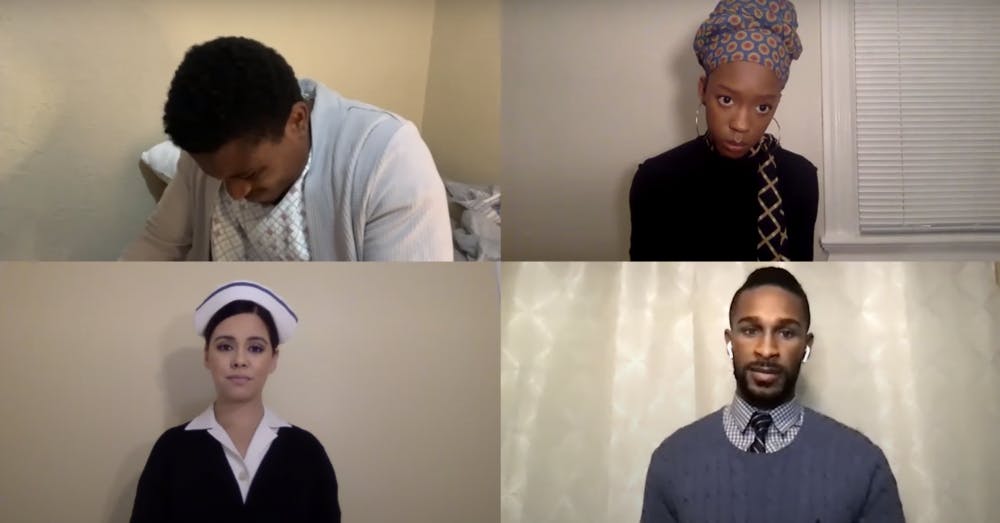Rites and Reasons Theatre launched the second iteration of “Songs of a Cage Bird,” the theatre’s first ever digital production written by Christopher Lindsay GS Oct. 22. The play tells the historic story of the Panther 21, a group of 19 men and two women who were convicted of plotting to kill police officers. The play demonstrated the multi-dimensionality of its characters, who were either survivors of the system or in some cases, representative of the system itself.
The play begins with Lee Berry, portrayed by JaQuan Jones GS, doing pushups and performing a monologue within a jail cell — as seen through a Zoom window. As the scene transitions to include other inmates and their interactions with police officers, the play chronicles the suffering that Berry as well as the other inmates faced in jail while allowed only limited visitations.
At the play’s climax, Berry suffers a stroke due to the terrible jail conditions, but is ultimately saved by Dr. John Cordice, played by hired actor Derrik Moore. The actors performed from their respective homes, finding new ways to evoke emotion in a virtual setting which added a new, modern sense of isolation to the narrative.
Lindsay’s grandparents were Black Panther members who were involved with the case, so “the story (of Panther 21) was a legend growing up,” he said during the panel discussion. Lindsay was motivated to write the play because of the way that history repeats itself, which he has seen in the various parallels between the Civil Rights and the Black Lives Matters movements. He started writing the play during the Ferguson unrest in 2014, when the lives of black activists began to take hold.
Playwriting and telling stories, Lindsay said, is his way of giving back to the community.
The cast and crew worked tirelessly to adapt the production to the digital format. Rehearsals started in early September, and were followed by a few days of recording. Public coordinator Ellie Winter ’21 said that immersing herself in the play was “much harder when we're all at home.” It was also a challenge to not inhabit the same physical space during the production process.
On Sunday Oct. 25, the play’s cast and crew gathered to host an online panel discussion including multiple former members of the Black Panthers, allowing audience members to ask questions of the play and its story. Discussion centered around the intersection of art and activism and how to portray these events in a truthful manner. Lindsay said that it gave him “a sense of pride and responsibility to the community” to write the play, especially because there are a lot of negative stigmas against the Panthers. Former Panther member Jamal Joseph praised the play and the emotions that it evoked, describing it as “electric.” Sylvia Ann Soares ’95, an actress at the Rites and Reasons theatre, congratulated Lindsay for capturing the humanity of characters through dialogue and construction of the play. She recounts “the performance artists in the 60s, 70s, 80s who inspired ensuing work that was a foil to Blaxploitation and misrepresentation and justification of the oppressor.”
Joseph said that the play showed “strength through vulnerability,” explaining that the Panthers demonstrated that even during the most oppressive regime, one could make a difference, even from prison. Lee Berry, Lindsay’s grandfather, thanked Lindsay for the portrayal of Dr. John Cordice, who saved his life and several others.’ Jones thanked the panel for the “special experience” and that he “never felt so close to my people” even through a Zoom call.
After sharing insights into the process of writing, producing and acting, the discussion shifted towards how actors and artists can move beyond performance to incite change. Former Panther member Dhoruba Bin Wahad raised precautions over how art could be politicized, but also acknowledged that “everyone has a role to play in the struggle.”

ADVERTISEMENT




